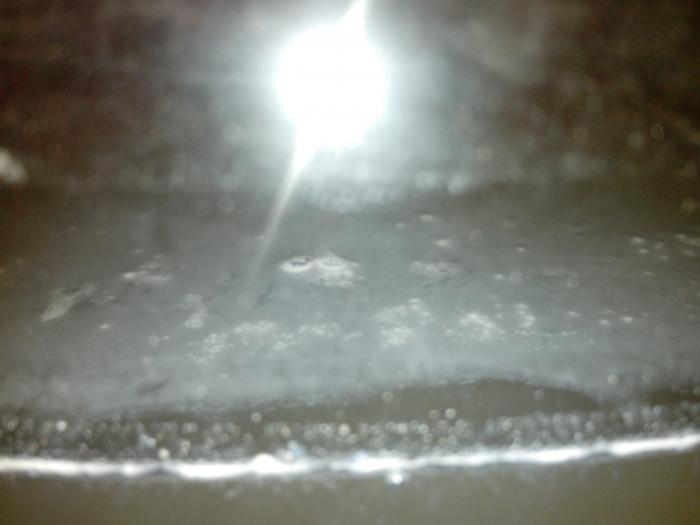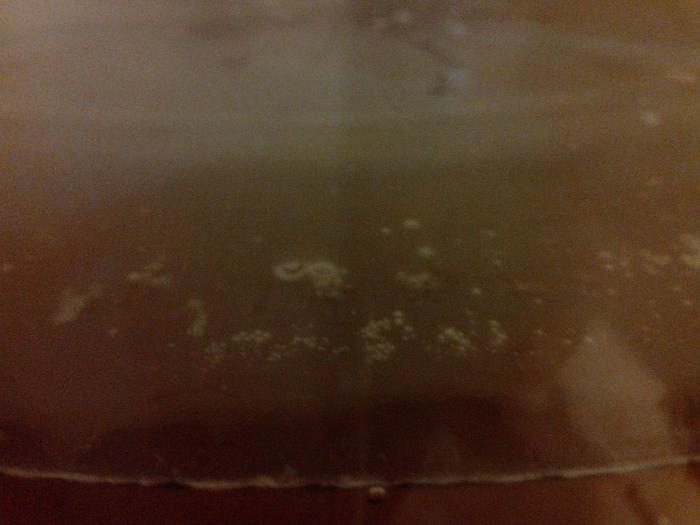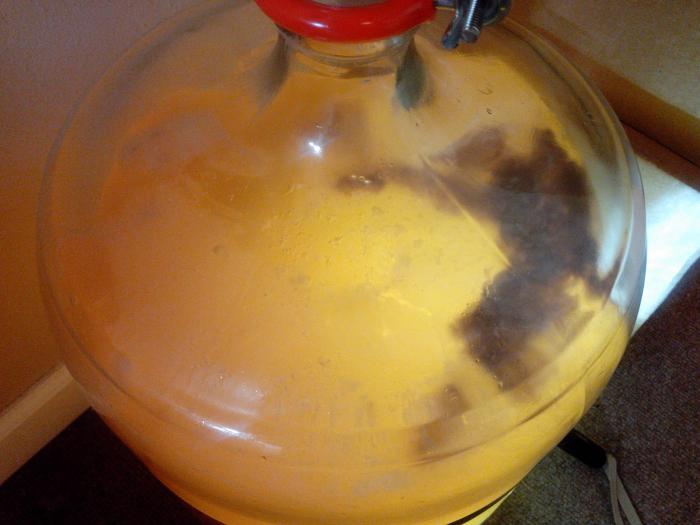I was hoping to avoid this, as the question of "Is my mead broken?" seems to be a very common one with slow starts and new mead makers, but it looks like it wasn't meant to be.
Roughly 68 hours ago, I pitched my first batch of mead. It's been sitting in a cool area (currently about 64F) since then, and the original temp of the batch upon pitching was about 70F. It slowly cooled, and I expected to see a bit of life from it. 24 hours passed, and a haze of what I assume is yeast slowly built on the surface. It's about the right color, but there aren't really any bubbles. At the same time, it doesn't clump or seem to have formed any raft, as any agitation simply causes the layer to become a bit more dispersed as if individual cells were being shifted around. There looks to be some sediment at the bottom, though not as much as I would expect to see (granted, this is based primarily in comparison to the single batch of beer I've done, and the 4 batches of cider I've got going). I assume this is probably the start of a yeast cake.
My original pitch was at a SG of 1.100, roughly 5/6ths of a packet of Wyeast 4184 (sweet mead) for a 5 gallon batch. The remaining 6th was used on a 1g batch of cider (which seems to be doing fine) and then as an experiment I sloshed a bit of remaining apple juice in the honey bucket from the mead-making, and then dumped it into the packet to see if it'd pick up enough yeast to start fermenting, in hopes that perhaps I could later use that yeast to start another batch of cider. That experiment has been sealed in a washed & sanitized empty 2L soda bottle, and I've kept it warm -- those are some very happy yeast, judging by the way they've multiplied.
Today I noticed something rather disturbing that has finally prompted me to post, though. While I was looking a bit earlier, I noticed that not only has the mead not gotten any further (visibly) or evolved any gas, it's done the opposite -- water from the airlock was actually being drawn into the fermentation vessel! Hopefully nothing has contaminated it there.
Now the question I'm left with is what could cause this, and what should I do about it? I wiggled the airlock off in an attempt to keep it from pulling more water in, and took the chance to give it a sniff while I was there (smelled like honey, nothing strange about it, but no real yeast smell either). I did boil the water before using it, but I let it cool afterwards in a sealed vessel before adding the honey. I'm wondering if my yeast are unhappy because I didn't introduce enough O2 into the depleted water while stirring in the honey and transferring it to a carboy. Would this cause what I'm seeing? If so, should I just shake the heck out of the carboy and hope for the best?
I've also since read that the strain of yeast I'm using has a bit of a history of weak starts. The packet said it was enough to inoculate 6g of must, so I assumed it was probably safe to reallocate some of it. From what I've seen, that may have been a bad idea. Should I decant the liquid off of my experimental batch and try adding the remaining cake to my mead in hopes of giving it a boost?
Are there any other possibilities I've overlooked?
Roughly 68 hours ago, I pitched my first batch of mead. It's been sitting in a cool area (currently about 64F) since then, and the original temp of the batch upon pitching was about 70F. It slowly cooled, and I expected to see a bit of life from it. 24 hours passed, and a haze of what I assume is yeast slowly built on the surface. It's about the right color, but there aren't really any bubbles. At the same time, it doesn't clump or seem to have formed any raft, as any agitation simply causes the layer to become a bit more dispersed as if individual cells were being shifted around. There looks to be some sediment at the bottom, though not as much as I would expect to see (granted, this is based primarily in comparison to the single batch of beer I've done, and the 4 batches of cider I've got going). I assume this is probably the start of a yeast cake.
My original pitch was at a SG of 1.100, roughly 5/6ths of a packet of Wyeast 4184 (sweet mead) for a 5 gallon batch. The remaining 6th was used on a 1g batch of cider (which seems to be doing fine) and then as an experiment I sloshed a bit of remaining apple juice in the honey bucket from the mead-making, and then dumped it into the packet to see if it'd pick up enough yeast to start fermenting, in hopes that perhaps I could later use that yeast to start another batch of cider. That experiment has been sealed in a washed & sanitized empty 2L soda bottle, and I've kept it warm -- those are some very happy yeast, judging by the way they've multiplied.
Today I noticed something rather disturbing that has finally prompted me to post, though. While I was looking a bit earlier, I noticed that not only has the mead not gotten any further (visibly) or evolved any gas, it's done the opposite -- water from the airlock was actually being drawn into the fermentation vessel! Hopefully nothing has contaminated it there.
Now the question I'm left with is what could cause this, and what should I do about it? I wiggled the airlock off in an attempt to keep it from pulling more water in, and took the chance to give it a sniff while I was there (smelled like honey, nothing strange about it, but no real yeast smell either). I did boil the water before using it, but I let it cool afterwards in a sealed vessel before adding the honey. I'm wondering if my yeast are unhappy because I didn't introduce enough O2 into the depleted water while stirring in the honey and transferring it to a carboy. Would this cause what I'm seeing? If so, should I just shake the heck out of the carboy and hope for the best?
I've also since read that the strain of yeast I'm using has a bit of a history of weak starts. The packet said it was enough to inoculate 6g of must, so I assumed it was probably safe to reallocate some of it. From what I've seen, that may have been a bad idea. Should I decant the liquid off of my experimental batch and try adding the remaining cake to my mead in hopes of giving it a boost?
Are there any other possibilities I've overlooked?







